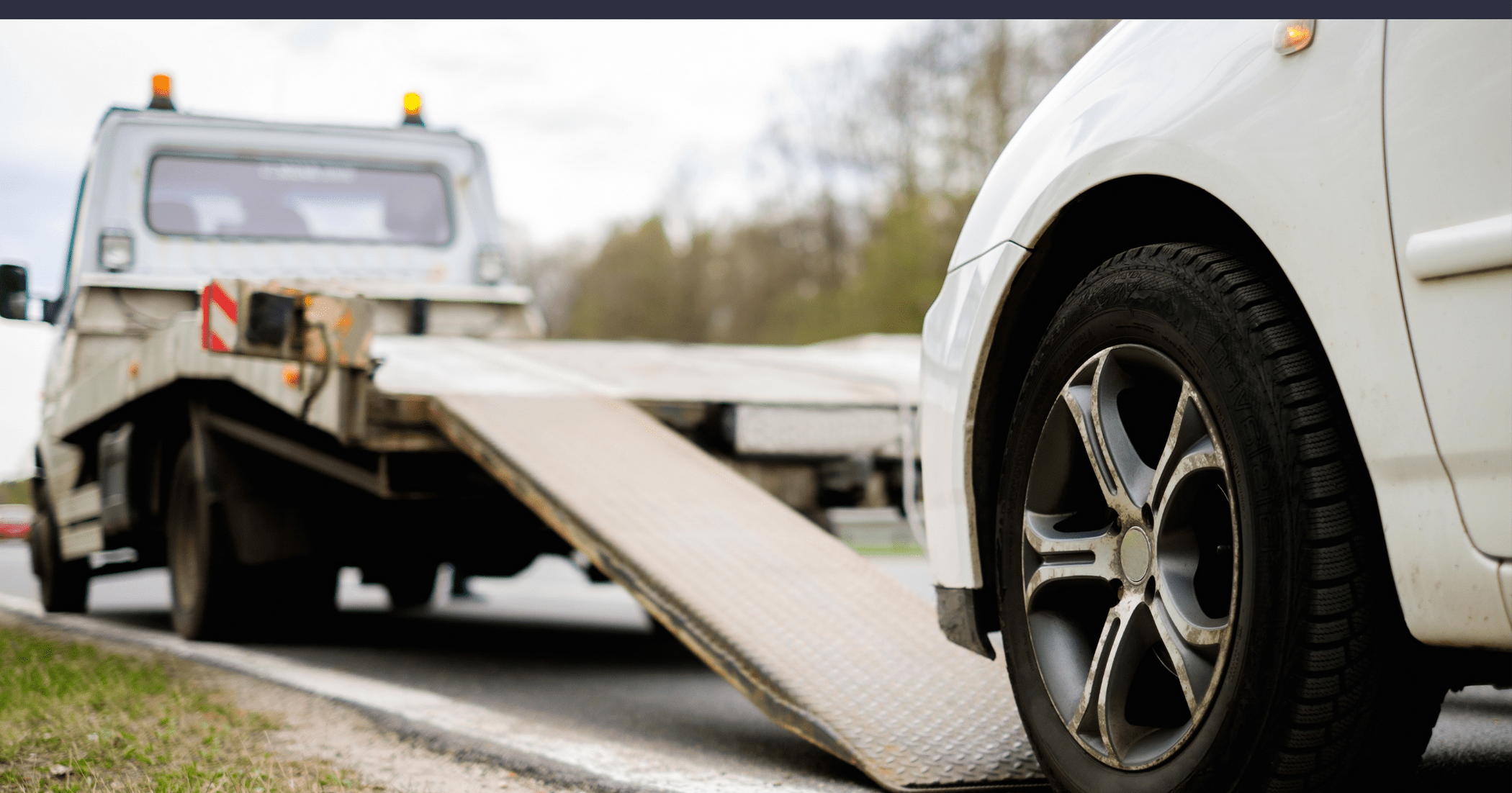
Driving Test Booking Changes For 2025 and 2026
Your guide to the latest driving test booking changes, new DVSA rules and measures aimed at cutting waiting times for learner drivers across the UK.
Being behind the wheel is a liberating experience, but it comes with responsibilities, including knowing how to handle unexpected situations like a vehicle breakdown. For new and less-experienced drivers, a breakdown can be particularly daunting. Whether it’s a flat tyre, engine failure, or an electrical issue, knowing the right steps to take can help you stay safe and get back on the road as soon as it’s safely possible to do so. Whether you’re a learner driver or a new driver, understanding the basics of car maintenance, safety, and knowing what to do in case of a breakdown is crucial for your peace of mind and safety on the road.
Not only can breakdowns be inconvenient, but they can also be dangerous, especially if they occur in high-traffic areas like motorways or rural roads with limited visibility. Understanding how to handle a vehicle breakdown properly can prevent accidents and ensure you’re prepared for the unexpected.
You can watch this video for all the information or continue reading below!
Understanding how to handle a vehicle breakdown is vitally important for every driver. It’s not just about knowing how to drive; it’s about being prepared for the unexpected. From minor inconveniences like a flat tyre to more serious issues such as engine failure, knowing how to react and respond appropriately can make all the difference in ensuring your safety and the safety of others around you. By familiarising yourself with the basics of car maintenance, you not only enhance your driving skills but also equip yourself to handle various scenarios effectively. Regularly checking fluid levels, inspecting tyres for wear and tear, and ensuring all lights and signals are in working order are simple yet crucial tasks that can significantly reduce the likelihood of experiencing a breakdown while on the road.
Many drivers overlook the importance of breakdown preparation, assuming it won’t happen to them. However, vehicle breakdowns are common and can occur at any time. By understanding the causes of breakdowns and how to respond, you can avoid unnecessary stress and keep yourself and others safe.
Being prepared for a breakdown goes beyond just mechanical know-how; it also involves having a plan of action in place. Knowing who to call for assistance, whether its roadside assistance or breakdown cover provided by your insurance company or a trusted mechanic, can speed up the resolution of the issue and minimise disruptions to your journey.
Ultimately, being a responsible driver means being proactive in preparing for the unexpected. By understanding the fundamentals of car maintenance, safety protocols, and how to effectively handle a vehicle breakdown, you not only safeguard your own well-being but also contribute to a safer and more enjoyable driving experience for everyone on the road.
Before experiencing a car breakdown, it’s useful to understand some of the most common causes. Identifying these risks in advance can help reduce the likelihood of an issue arising.
Flat or Damaged Tyres: Punctures, low tread depth, or underinflated tyres can result in a sudden breakdown.
Battery Issues: A weak or dead battery is one of the most frequent causes of a vehicle breakdown, especially in cold weather.
Overheating: Lack of coolant, radiator issues, or a faulty thermostat can lead to an overheated engine.
Fuel Problems: Running out of fuel or using the wrong type of fuel can quickly leave you stranded.
By regularly maintaining your car and being aware of these common causes, you can potentially reduce the chances of encountering a breakdown.
No driver expects their car to break down, but having an emergency kit in your vehicle can make a huge difference. Some essential items to keep in your car include:
A high-visibility vest and warning triangle: To alert other drivers of your situation.
A fully charged mobile phone and car charger: To call for breakdown assistance if needed.
Jump leads: To restart your car if the battery is flat.
A spare tyre and necessary tools: For replacing a flat tyre if safe to do so.
First aid kit: For minor injuries that may occur.
Torch with spare batteries: Useful if your breakdown occurs at night.
Keeping these essential items in your car will help ensure you’re well-prepared for any unexpected breakdown.
Whilst some instances can’t be helped, there are a number of ways that you can reduce the likelihood of experiencing a vehicle breakdown.
| Regularly Check Fluid Levels | Engine oil, coolant, brake fluid, and windshield washer fluid levels should be checked regularly. |
| Inspect Tyres | Check tyre pressure and tread depth regularly. Underinflated tyres can affect fuel efficiency and handling. |
| Battery Health | Keep an eye on your car battery’s health. A weak battery can lead to starting problems. |
| Lights and Signals | Ensure all lights and signals are working properly. Faulty lights can pose a safety hazard, especially at night. |
It is natural to feel stressed when your car breaks down, but panicking will only make the situation worse. Take a deep breath, remain composed, and focus on what needs to be done next to resolve the issue. Keeping a clear head will help you assess the situation logically and take the appropriate steps to stay safe.
Your safety should always come first. If your car breaks down in the middle of the road, try to steer it to the side or a safe location away from traffic. Activate your hazard lights to alert other drivers and reduce the risk of accidents. If you’re on a motorway, exit the vehicle on the passenger side and stand behind the safety barrier.
Once you are safely off the road, take a moment to assess the situation. Is it a simple problem like a flat tyre, or is there something more serious like engine trouble? Understanding the nature of the issue will help you decide on the next course of action. If warning lights appear on your dashboard, refer to your vehicle’s manual for guidance.
If you have roadside assistance or some form of breakdown cover, now is the time to use it. Call your provider and explain the situation, providing your location and any relevant details. If you do not have roadside assistance or breakdown cover, reach out to a trusted mechanic or someone who can help you get back on the road safely. If you’re in an unfamiliar area, use your phone’s GPS to pinpoint your location.
If you are unable to move your car to a safe location or if it’s not safe to exit the vehicle, stay inside with your seatbelt on. This will help protect you from passing traffic and potential hazards while you wait for help to arrive. Remember to keep calm and wait patiently for assistance. If you have passengers, ensure they also stay inside the vehicle unless it’s unsafe.
Investing in breakdown cover like having a safety net when you’re on the road. Here’s what you need to know:
What is Breakdown Cover:Breakdown Cover is a service provided by insurance companies to help drivers when their vehicle breaks down.Services Offered:Services typically include towing, jump-starting a battery, changing a flat tyre, and providing fuel delivery.Coverage:Check what services are covered under your breakdown cover policy and ensure it meets your needs.Emergency Contacts:Keep the contact details of your breakdown cover provider handy in case of emergencies.
Handling a car breakdown can be stressful, but with the right knowledge and preparation, you can navigate through it safely. Remember to stay calm, prioritise safety, and seek assistance when needed. By taking preventative measures, keeping emergency essentials in your vehicle, and understanding the common causes of breakdowns, you can significantly reduce the risk of being caught off guard.
No driver can completely eliminate the risk of a breakdown, but by being prepared and following the right steps, you’ll be able to handle the situation more efficiently and safely.
Commonly asked questions about vehicle breakdowns
Pull over to the hard shoulder as far left as possible, turn on hazard lights, exit the vehicle from the left side, and call for assistance immediately
If you’re confident and it’s safe to do so, you can attempt minor fixes like changing a flat tyre or jump-starting a battery. However, always prioritise safety and call for help if needed.
It depends on your insurance provider and policy. At Collingwood Insurance, we offer breakdown cover as an add-on as part of a comprehensive coverage package to learner driver insurance.
It is recommended to service your car every 6-12 months or as per the manufacturer’s guidelines. Regular servicing helps maintain your car’s performance and reduces the risk of breakdowns.
In most cases, breakdown cover or roadside assistance services can be used by anyone driving the insured vehicle with the policyholder’s permission. However, it is best to confirm with your provider beforehand.
If your car breaks down at night, turn on your hazard lights immediately and use a torch to improve visibility. If you have a warning triangle, place it behind your car at a safe distance. Remain in your vehicle with the doors locked while waiting for assistance.
If the issue is minor, such as a flat tyre and you have the necessary tools, you may be able to fix it yourself. However, if you’re unsure or the issue is complex, it’s best to wait for professional assistance to avoid making the situation worse.
Regular car maintenance, including checking fluid levels, tyres, and battery health, can help prevent breakdowns. Servicing your car according to the manufacturer’s guidelines is also essential to keep it running smoothly.
You will be logged out in seconds. Do you want to stay signed in?